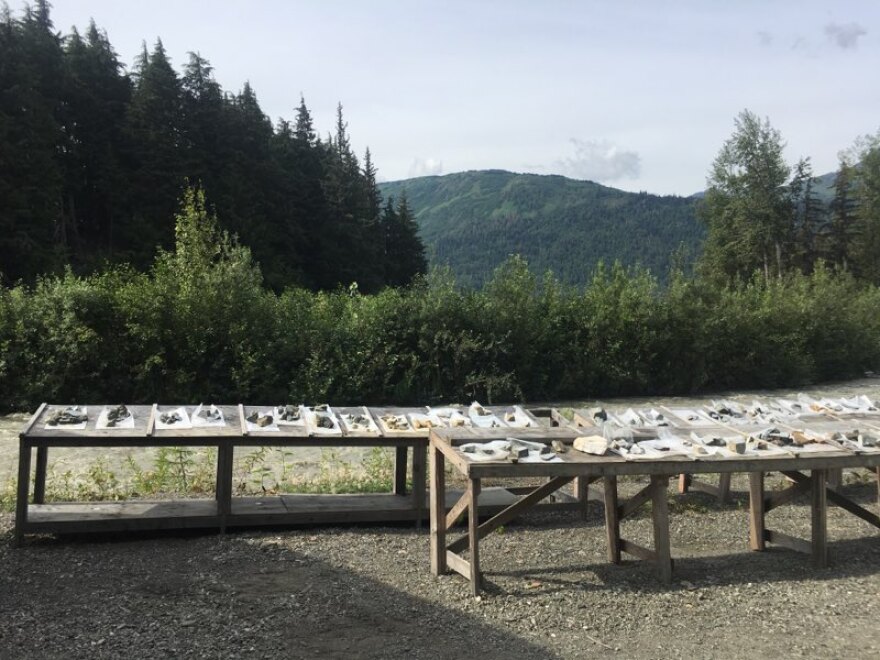A controversial mineral exploration project north of Haines has changed hands twice in the last year. That included earlier this month, when Vizsla Copper purchased the Palmer Project in exchange for $15 million of its company stock.
Steve Masterman currently serves as deputy director of the Alaska Critical Minerals Collaborative at the University of Alaska Fairbanks. Before that, he was the state geologist.
The Alaska Desk’s Avery Ellfeldt caught up with Masterman to discuss what’s been happening with the project, which has been under exploration by Constantine Mining since 2006. He said projects like this can move quickly or take decades to become mines, for a lot of different reasons.
This transcript has been edited for length and clarity.
Steve Masterman: Well, it’s all across the spectrum. You know, some of them go pretty quickly, like Fort Knox and Pogo went pretty quickly in a relative sense, and then other ones take many decades. Donlin is another example. And some of them never become mines, even though they look very promising for a long while, for various reasons. Could be economic reasons, could be environmental reasons, could be social reasons. Could be all of the above.
Avery Ellfeldt: The project has changed hands a few times in the last year or so. Could you speak to whether that’s a pretty normal progression in terms of these exploration projects changing hands pretty frequently?
SM: I think it is fairly common. I mean, this has happened to this one several times. You see other properties, the Nickel Platinum Group property in the Alaska Range, has changed hands several times. The Johnson property on the Alaska Peninsula — sorry, Cook Inlet — has changed hands several times. So it does happen. And, you know, I think if the project is more compelling, it happens less.
AE: My other question would be do these types of transactions necessarily mean anything about a project’s viability or economic feasibility? Anything else you’d add there?
SM: There’s reasons that people back out, obviously. And I don’t know what the reasons are that the latest groups backed out of the Palmer Project, but they had a reason. Sometimes those reasons are that they’re not a good fit for the company at its current stage. So it might not speak necessarily to the project itself. It might in some cases have a lot more to do with the corporation and how their overall business is being managed and their portfolio of projects.
AE: Could you walk me through why projects like these are attractive from an investor point of view, given that they operate over such long timelines and so many never come to fruition?
SM: It’s a risk and reward equation. These are riskier investments, that’s for sure. And so investors have to look at it pretty critically and analytically to see whether they think it’s worth rolling the dice on, essentially.
AE: They’ve kind of cited the Trump administration’s orientation toward mining in Alaska as a potential boon for the project. I’m curious if you could speak to that, whether the current administration’s mindset or approach could actually benefit a project that’s at this stage of exploration?
SM: The current administration definitely has a pro-development stance. I think that’s pretty obvious. So they’re going to be leaning favorably toward mineral development projects. But whether this thing gets to that point within this administration is an open question. And I would guess, in three years, they’re not going to be ready to apply for permits. So whatever will happen, in a permanent sense, will probably happen in a future administration.
AE: One of the local tribes, the Chilkat Indian Village, has made it pretty clear that they’re not in support of this and that the new owner won’t be able to receive social license or community support. Would you say that’s pretty common with exploration projects in Alaska, specifically?
SM: I think it’s common with mineral development projects globally. The problem the industry has is its perception. And I think the industry is working hard to change that perception, but it takes a while.


